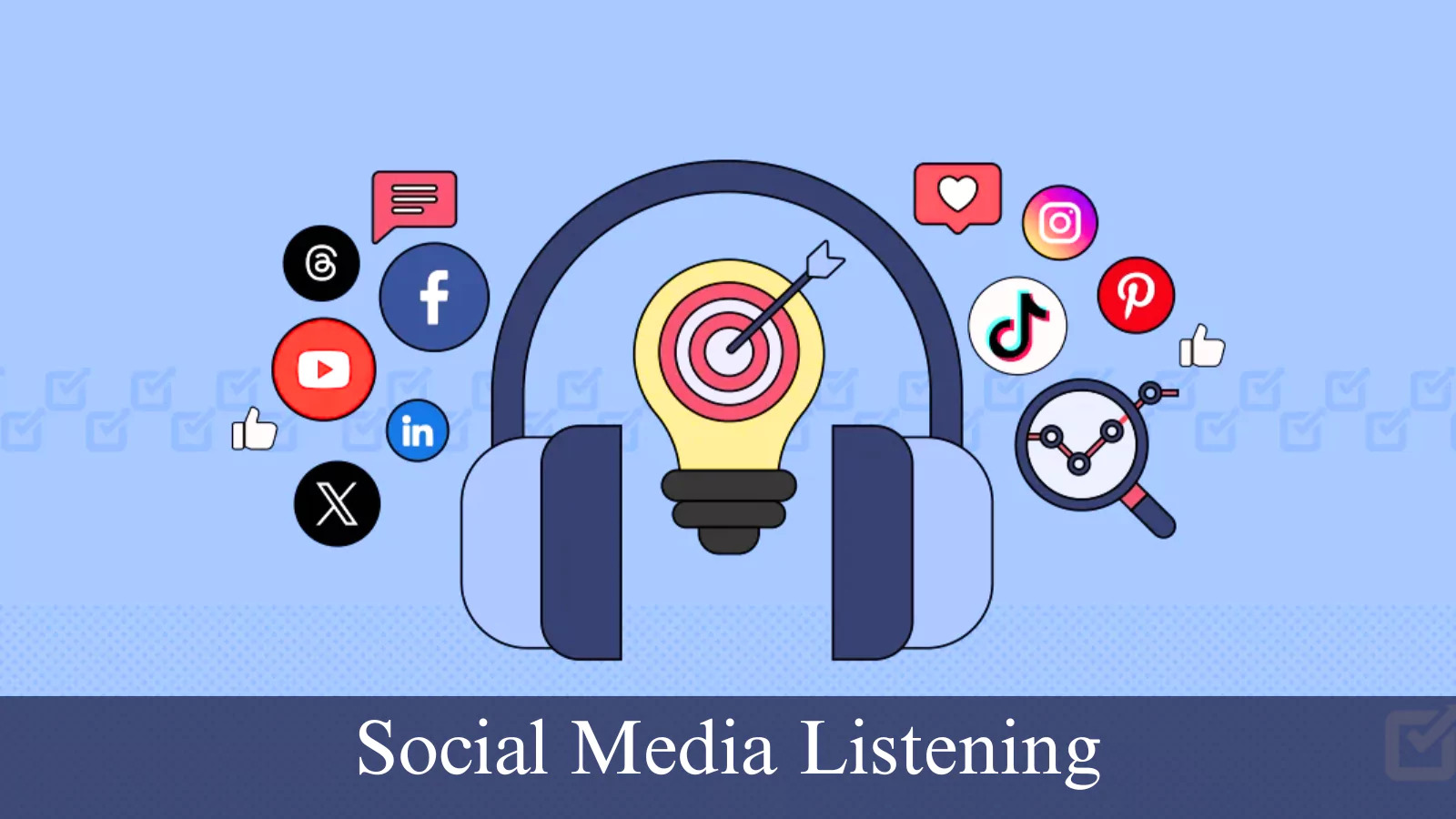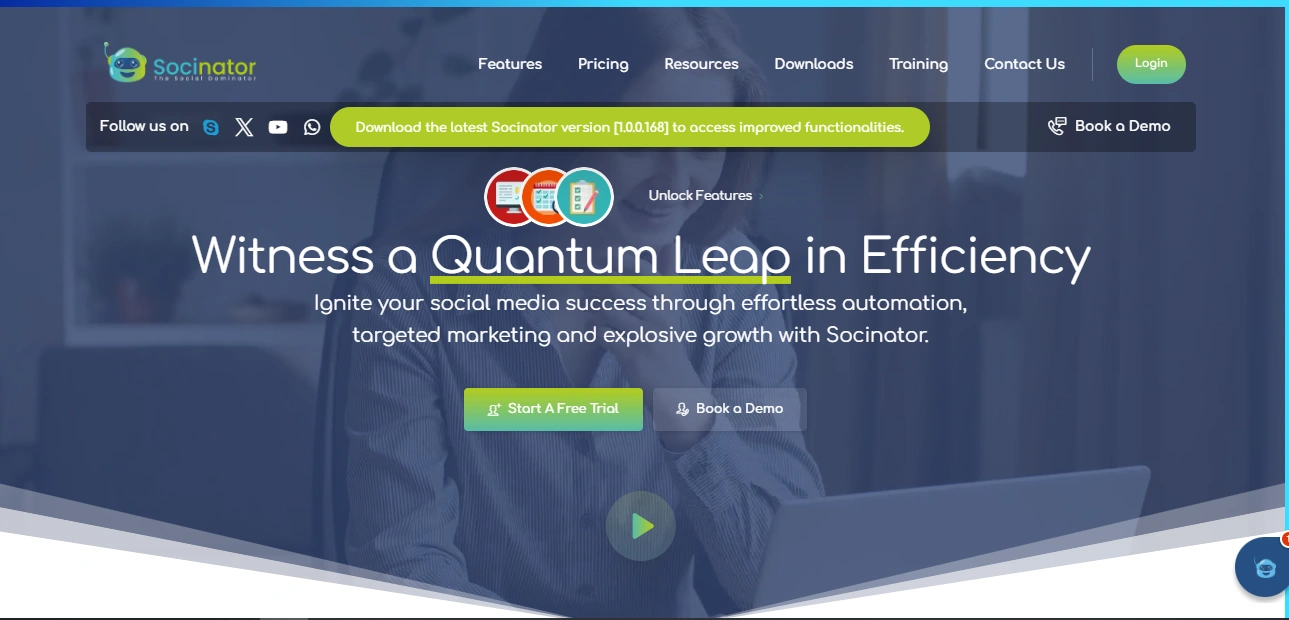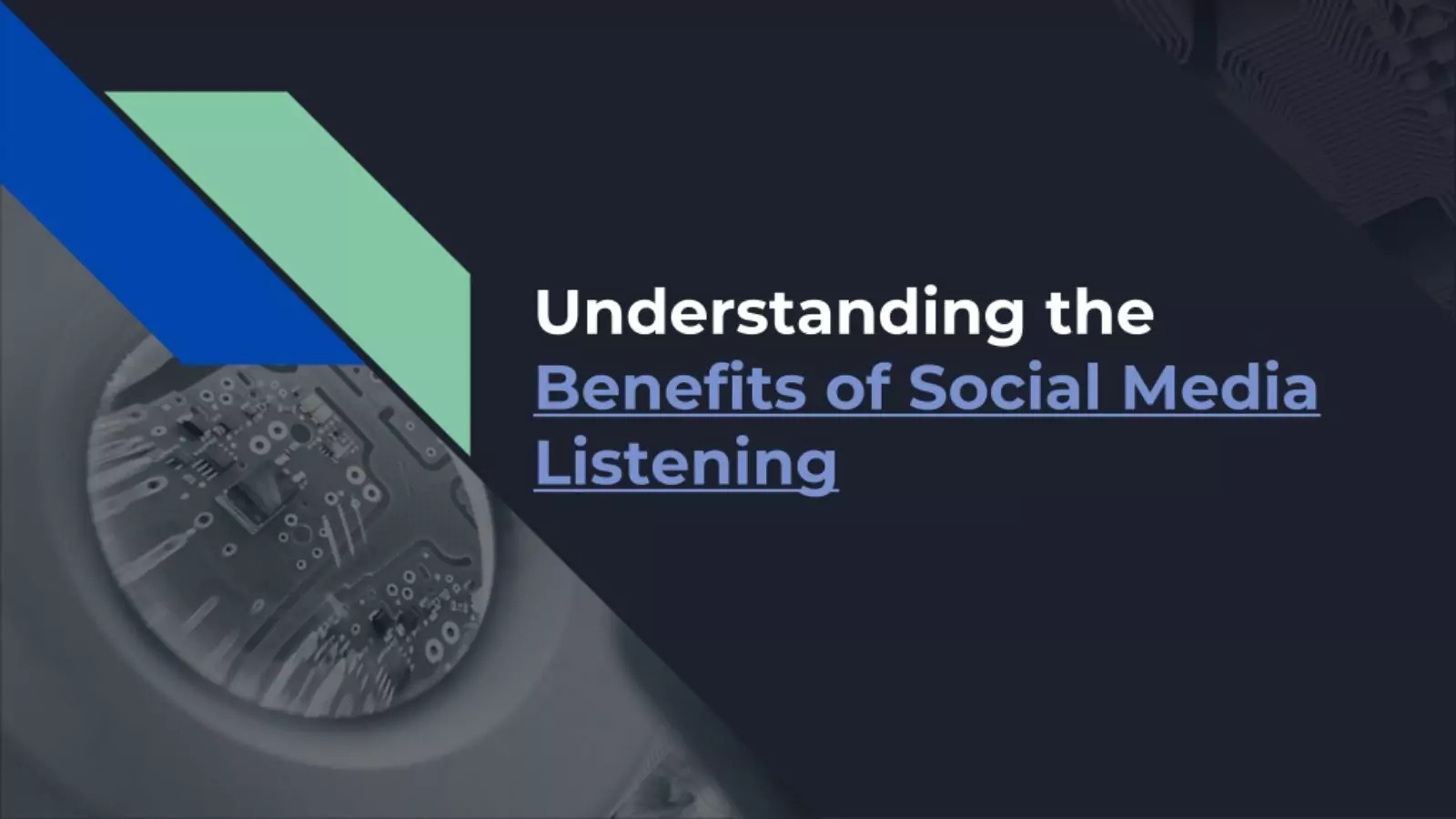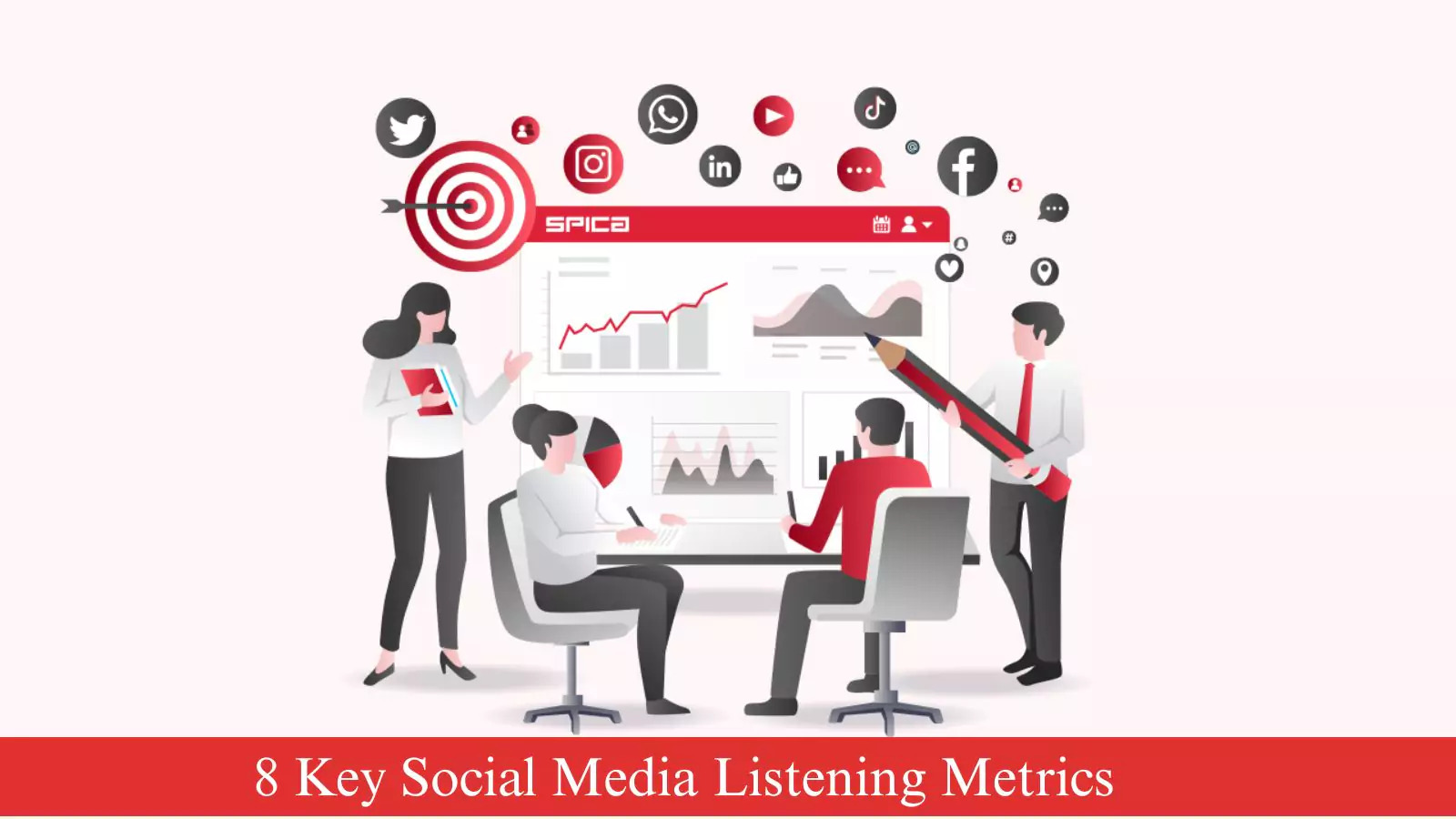In today’s digital age, social media has become an essential channel for businesses to connect with their customers, build brand awareness, and drive sales. However, with the vast amount of data available on social media, it can be challenging for businesses to make sense of it all and turn it into actionable insights.
That’s when social media listening becomes essential. It is a powerful tool that allows businesses to tap into social media conversations and gain valuable insight into their customers’ needs, preferences, and behavior.
But simply listening isn’t enough. Businesses need to track the right social media metrics to extract actionable insight. This post explores the what, why, and how of social media listening metrics, helping you unlock the full potential of social listening for your brand.
In a hurry? Listen to the blog instead!
What Is Social Media Listening?
Social media listening is monitoring digital conversations to understand what customers say about a brand, product, or industry. It involves collecting data from platforms like Twitter, Facebook, Instagram, LinkedIn, and even blogs or forums to gauge public sentiments and emerging trends.
Social listening digs deeper than social media monitoring, which focuses on metrics such as likes and shares. It uncovers why people feel a certain way, what emotions drive their decisions, and how your brand can adapt to meet their needs.
By analyzing social media listening metrics, businesses gain critical insight that can shape marketing strategy, product development, customer service, and overall brand perception.
As we are discussing social media listening, which is used to improve the overall brand perception, and other decisions related to social media management, we can consider Socinator, an automation software.
Socinator is a cutting-edge social media automation tool that helps businesses and organizations track, analyze, and respond to online conversations about their brand, competitors, and industry.
By leveraging Socinator’s advanced features, users can gain valuable insights into their social media presence, identify trends, and make data-driven decisions.
By integrating with social media listening metrics, Socinator helps businesses monitor brand mentions, sentiment, and trends in real-time, enabling them to make data-driven decisions and improve their online presence with Socinator’s advanced features. Leveraging Socinator’s capabilities can help businesses transform social media listening metrics into actionable insights, driving business growth and success.
Also Read:
Social Listening 101: Answer To All Your Key Troubles
Some Key Features of Socinator
Social Media Monitoring:
Socinator is an automation tool that can help you scrape and monitor other creators’ user IDs. It also allows you to check on new trends and hashtags that may help you with your campaigns across multiple social media platforms, including Twitter, Facebook, Instagram, and more.
Social Media Scheduling:
Scheduling social media posts can help businesses maintain a consistent online presence, which can increase the volume of mentions and engagement. Businesses can encourage more conversations about their brand by scheduling relevant and engaging content.
Content Management:
Content management features allow businesses to create and curate content that resonates with their audience. By analyzing the performance of this content through social media listening, you can redefine your content strategy and accordingly use the Socinator automation feature to manage your social media calendar.
Auto Engagement:
Socinator’s Auto Engagement feature allows for automatic replies and comments on your posts, fostering real-time interaction with your audience. This proactive engagement helps in building stronger relationships and encourages more meaningful conversations around your brand.
Also Read:
How To Schedule & Automate Your Long X Posts?
Why Social Media Listening Matters?
Here’s why businesses, regardless of size or industry, should prioritize social listening:
- Understand audience sentiment: Discover how your customers feel about your brand and industry.
- Monitor brand health: Spot potential PR crises before they escalate.
- Identify trends and opportunities: Stay ahead of the curve by tracking industry buzzwords and consumer interests.
- Benchmark against competitors: See how you stack up in the digital marketplace.
- Improved products and services: Use feedback to refine your offerings and meet customer expectations.
5 Major Benefits Of Social Media Listening
Here are some social media listening benefits for businesses that you must know about:-
- Improved customer service:
By listening to customer complaints and concerns on social media, businesses can respond quickly and improve their customer service. - Enhanced brand reputation:
Social media listening helps businesses identify and address negative sentiment and improve their brand reputation. - Increased sales:
By understanding customer needs and preferences, businesses can develop targeted marketing campaigns that drive sales. - Competitor analysis:
Social media listening allows businesses to track their competitors’ online activity and stay ahead of the competition. - Product development:
By listening to customers’ feedback and suggestions, businesses can develop new products and services that meet customer needs.
Social Media Listening Tools
There are many social media listening tools available, ranging from simple to complex.
Here are some popular social media listening tools:
- Hootsuite Insight: A social media listening tool that provides real-time data and analytics.
- Sprout Social: A social media management tool that includes social media listening capabilities.
- Brandwatch: A social media listening tool that provides advanced analytics and insight.
- Mention: A social media listening tool that tracks online conversations about a brand or industry.
- Ahrefs: A digital marketing tool that includes social media listening capabilities.
Best Practices Of Social Media Listening
To get the most out of social media listening, businesses should follow these practices:
- Set clear goals and objectives: Clearly define what you want to achieve through social media listening.
- Choose the right tools: Select those tools that will help further, meet the needs and demands of the business.
- Track relevant keywords and hashtags: Identify relevant keywords and hashtags to track online conversations.
- Analyze and act on data: use social media listening data to inform business decisions and drive results.
- Monitor and adjust: Continuously monitor social media listening data and adjust your strategy as needed.
Without effective listening, brands miss out on opportunities and may even alienate their audience. But how do you measure the effectiveness of your listening efforts? At this point, Social media listening metrics become important.
8 Key Social Media Listening Metrics to Track
There are dozens of metrics available, but not all are created equal. Below are the most essential social media listening metrics that offer the most value when it comes to deriving meaningful insights.
-
Volume of Mentions:
The number of times your brand or keyword is mentioned across social media channels.
- Why it matters: A spike in volume might indicate increased brand awareness, a viral moment, or a brewing crisis. Analyzing the context behind those mentions is key to determining the right response.
- Pro tip: Set up alerts for sudden increases or decreases in mentions to take timely action.
-
Sentiment Analysis
Sentiment analysis determines whether the conversations about your brand are positive, negative, or neutral. It helps you understand how people feel about your product, service, or campaign. For example, an increase in mentions isn’t necessarily good news unless a sentiment analysis shows that most of those mentions are positive. Tracking sentiment over time also helps evaluate the long-term effects of your brand messaging.
-
Share of Voice (SOV):
Share of voice compares how often your brand is mentioned versus your competitors. It helps you understand your visibility in the market and where you stand in comparison to others in your industry. A high SOV means you’re dominating conversations, which can indicate strong brand awareness or customer loyalty. This metric is particularly useful for benchmarking and strategic planning.
-
Reach:
Reach indicates how many unique users have potentially seen your brand or message. It’s a good measure of brand awareness and campaign exposure. A high reach dose doesn’t always mean high engagement, but it does show that your content is being widely disseminated. When analyzed with sentiment or engagement, it gives a fuller picture of your impact.
-
Engagement:
Engagement measures how audiences interact with your content or mentions. This includes likes, shares, comments, retweets, and replies. High engagement typically means your audience finds the content interesting or relevant. Comparing engagement rates with reach or volume of mentions can help you determine the effectiveness of your content strategy.
-
Top keywords and Hashtags:
Tracking frequently mentioned keywords and hashtags provides insight into trending topics and the language your audience uses. This can inform your content creation, SEO strategies, and ad targeting. It also helps you identify emerging issues, topics, or opportunities to join relevant conversations in real-time.
-
Influencer Mentions:
This metric identifies mentions from accounts with significant followings or influence in your niche. Influencers can amplify your message and significantly impact your brand perception. Monitoring these mentions helps you understand who is talking about your brand and whether it’s resonating with high-impact voices. It also supports influencer marketing strategies by identifying potential partners.
- Customer feedback and complaints:Social listening is a goldmine for customer feedback, positive and negative. Tracking customer complaints and recurring issues allows you to improve your product or service. Identifying common pain points mentioned on social media allows you to be proactive in addressing concerns and improving the customer experience.
Also Read:
10 Ultimate Social Media Plan Template To Boost Your Strategy
How to Use Social Listening Metrics Strategically?
Simply tracking metrics isn’t enough; you need to act on them. Here’s how to turn data into strategy:
- Detect and Manage Crises Early: If you notice a spike in negative sentiment or a sudden rise in mentions, dig deeper. Real-time listening enables your PR or support teams to get ahead of a brewing crisis before it goes viral.
- Fuel product Innovation: Are customers asking for new features? Complaining about specific issues? Use these insights to guide R&D and prioritize updates that matter most to your audience.
- Refine Messaging and Content: Analyzing the language your audience uses can help tailor your brand messaging. If customers are saying “affordable and reliable,” weave those themes into your next campaign.
- Identify Brand Advocates: Your most loyal customers are often your best marketers. Use social listening to identify brand advocates and reward them through loyalty programs or exclusive content.
- Benchmark and Improve: Track social media metrics consistently to measure performance over time. Compare results across campaigns, platforms, or competitors to spot areas for growth.
Final Thoughts: Listening is the New Marketing Superpower
In an age where consumers expect personalization and responsiveness, social media listening is no longer optional; it’s essential. By tracking the right social media listening metrics, brands can stay connected to their audience, make smarter decisions, and create meaningful interactions.
Social media listening is a powerful tool that allows businesses to tap into conversations happening on social media and gain valuable insight into their customers’ needs, preferences, and behaviors. By tracking and analyzing social media listening metrics, businesses can improve customer service, enhance brand reputation, increase sales, and stay ahead of the competition. By following best practices and using the right social media listening tools, businesses can unlock the full potential of social media listening and drive business results.
Social listening is not just about tracking mentions—it’s about understanding the people behind them. The brands that listen well, respond thoughtfully, and act strategically are the ones that thrive.
So, if you haven’t invested in a social listening strategy yet, now is the time. The conversation is happening with or without you—why not be part of it?
With Socinator’s comprehensive automation features, including auto engagement, businesses can not only listen but also actively participate in conversations, fostering stronger relationships and driving growth.
FAQs-
1. How can social media listening metrics help identify emerging trends in consumer behavior?
Ans. Social media listening metrics can help identify emerging trends in consumer behavior by analyzing changes in conversation volume, sentiment, and topic relevance over time. By tracking keywords and hashtags, businesses can spot shifts in consumer interests and preferences, allowing them to adapt their strategies accordingly.
2. What role do influencer metrics play in social media listening, and how can they be effectively utilized?
Ans. Influencer metrics in social media listening help identify key individuals who are driving conversations and influencing opinions within a specific niche or industry. By analyzing an influencer’s reach, engagement, and relevance, businesses can determine whether partnering with them could amplify their brand message or improve their social media presence.
3. How can sentiment analysis be used to measure the impact of social campaigns?
Ans. Sentiment analysis can be used to measure the impact of social media campaigns by tracking changes in sentiment before, during, and after a campaign. This helps businesses understand how their audience perceives their messaging and whether it resonates with their target audience, allowing for adjustments to be made in real-time.
4. What are some common challenges businesses face when implementing social media listening metrics, and how can they be overcome?
Ans. Common challenges businesses face when implementing social media listening metrics include data overload, noise from irrelevant conversations, and difficulty in deriving actionable insight. These challenges can be overcome by using advanced analytical tools, setting clear objectives, and focusing on key performance indicators (KPIs) that align with business goals.
5. How can social media listening metrics be used to enhance customer experience and improve brand reputation?
Ans. Social media listening metrics can enhance customer experience and improve brand reputation by identifying areas for improvement, tracking customer feedback, and responding promptly to concerns. By demonstrating a commitment to customer satisfaction, businesses can build trust and loyalty with their audience.








